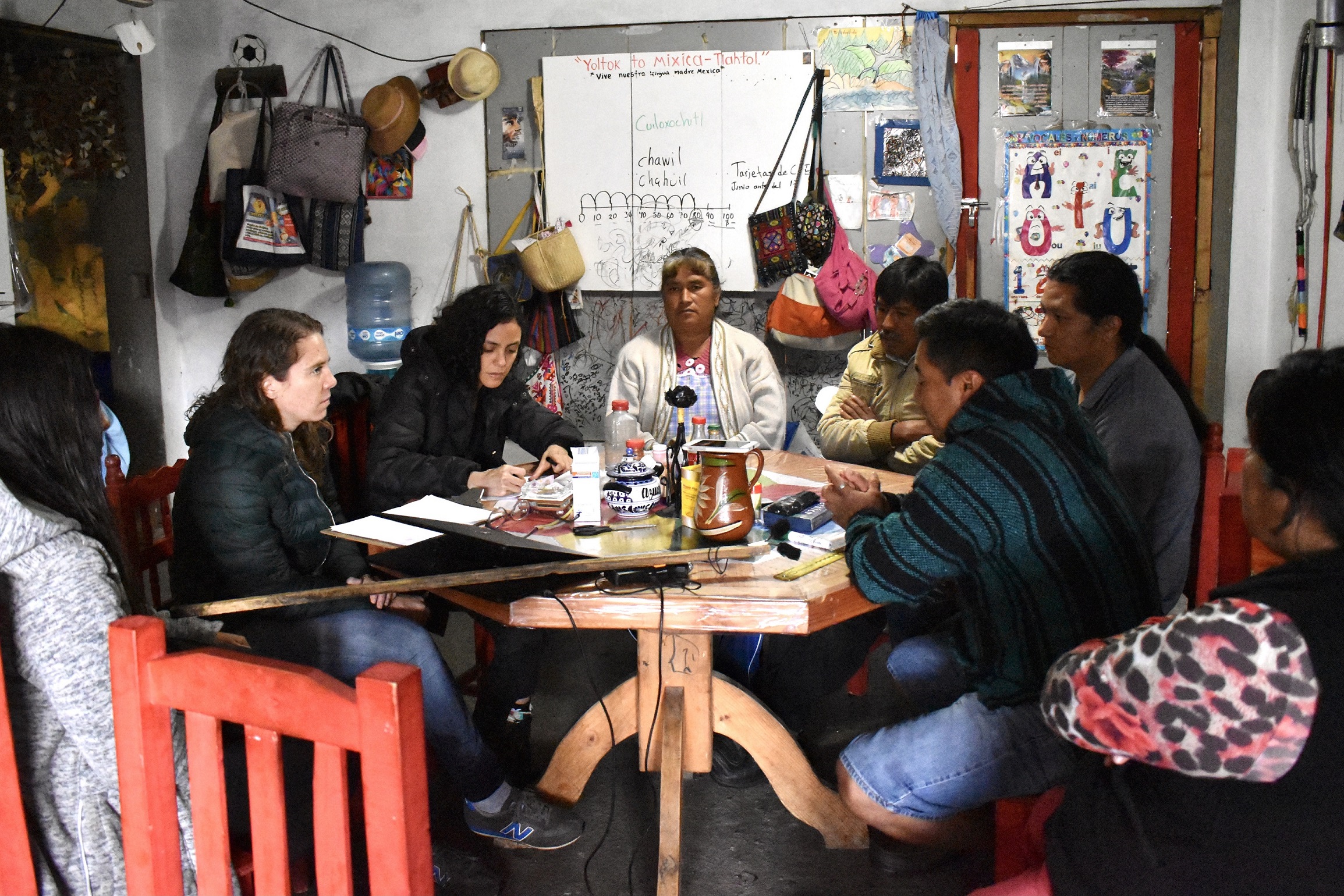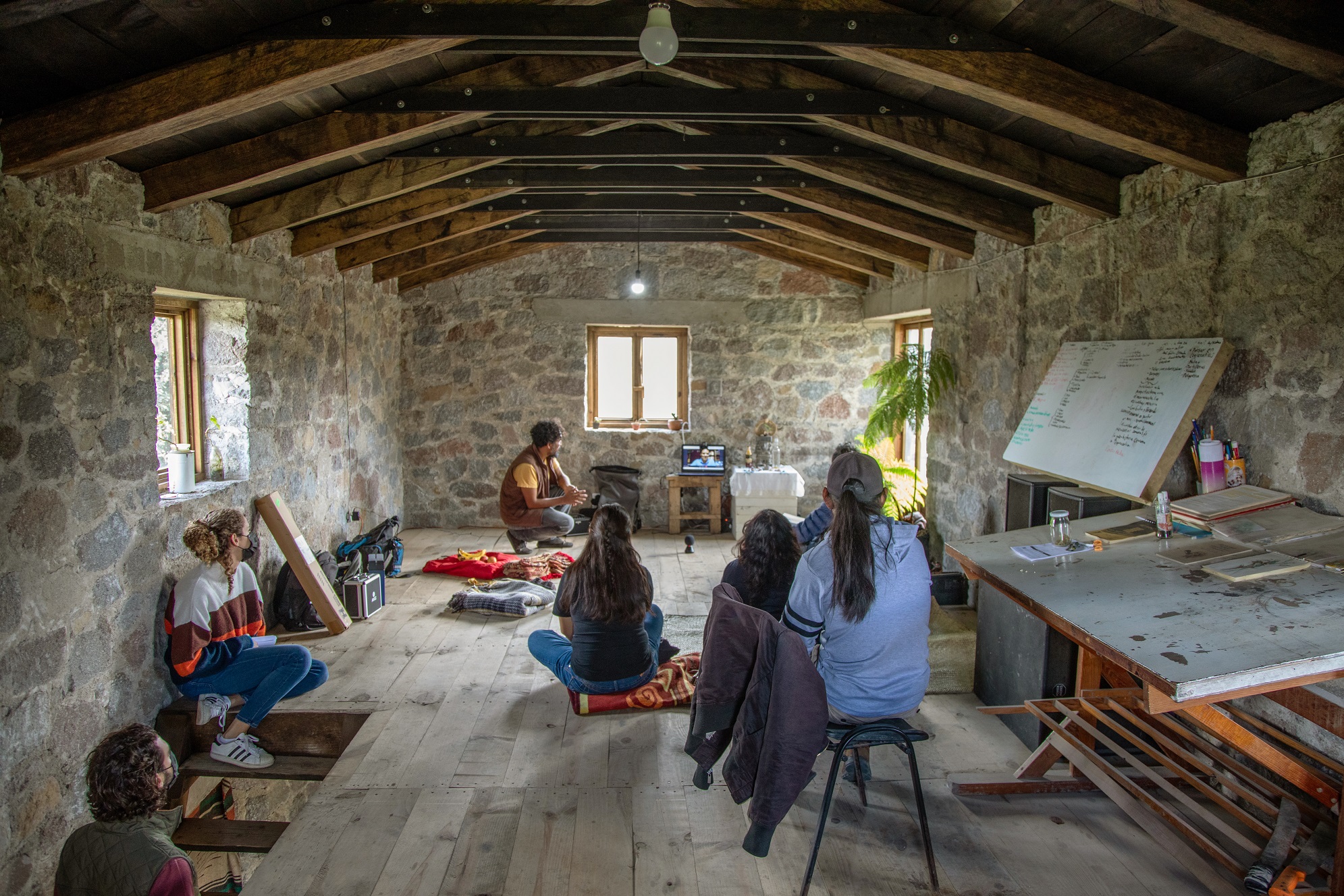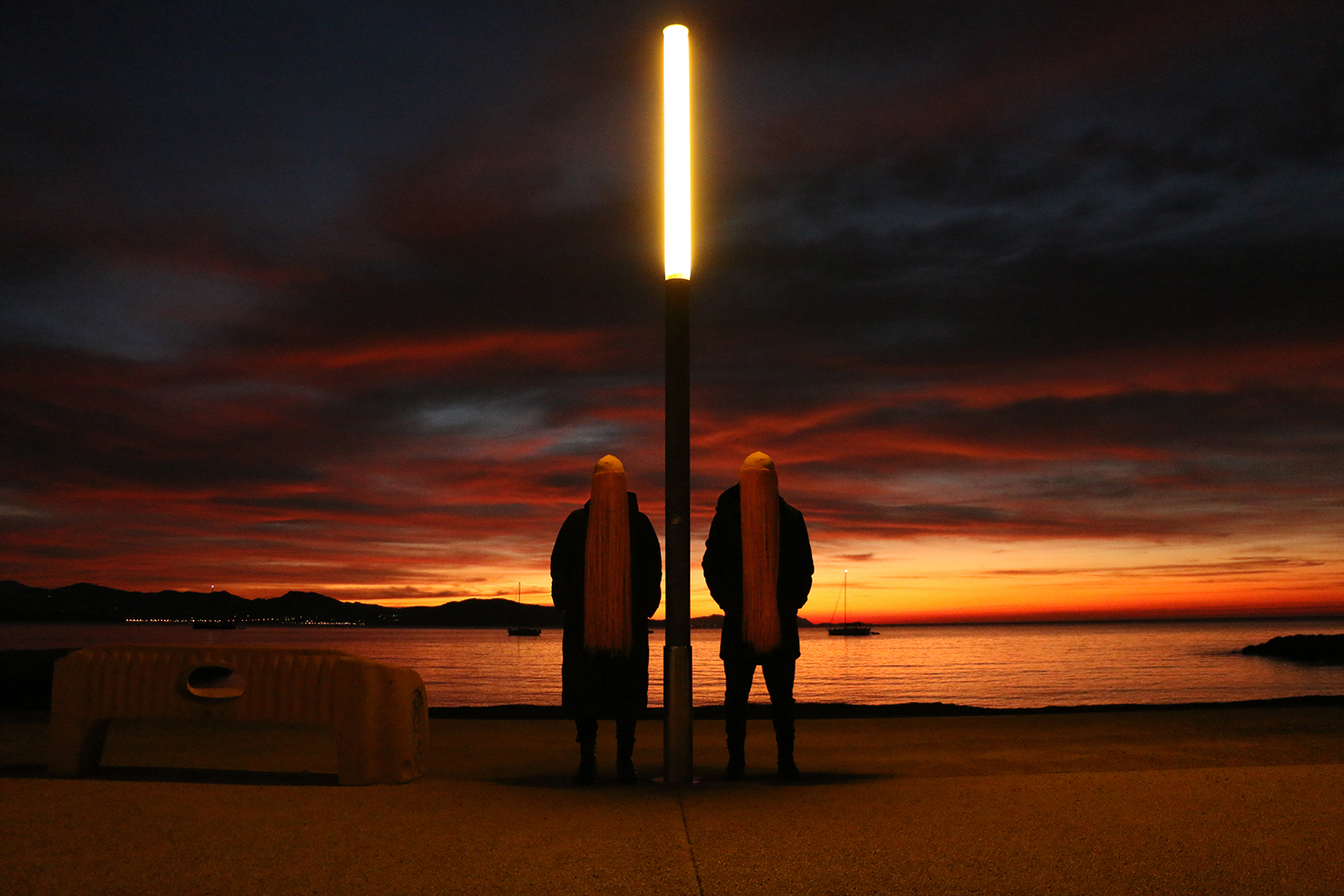At first, the pretensions or aspirations to modernize the artistic exercise within the state of Tlaxcala, Mexico, was what motivated us to form a collective. It all began with the Minilab_Tlaxcala project of transdisciplinary experimentation in the neighborhood of San Nicolás belonging to the Nahua community of Quauhtotohuatlan (municipality of San Pablo del Monte, Tlax.), whose purpose was to undertake socio-artistic actions based on the synergy between art, science and technology, and the community, which to some extent addressed aspects, interests or problems of the community's reality.
This allowed us to recognize the serious problems that afflict the material, socio-political and cultural life of the community: the lack of memory of our language (Nahuatl), unregulated logging, human trafficking, discrimination, and the extraction of knowledge, among others. In the face of this, artistic work was reduced to being a window for certain areas of reality and no more, a demobilizing "esthetic" showcase, somewhat apolitical, which was not resolved in—or nurtured by—praxis (the community and its problems were offered to new specters of "art": neo-indigenism; the idealization of the community as a creative agent; new age; etc.). The socio-artistic action ends up in the aesthetic pleasure, for example, of the exhibition or re-production, or absorbing everything gained in the theoretical-practical field to that same pleasure, with an almost non-existent contribution to the transcendence, recognition, development, and positioning of the concrete community culture; the minimal exceptions to such a situation became, at the time, strategic allies, support networks, and comrades.
This context helped us understand that we were facing a colonial economic, political and cultural system, whose aesthetics we initially aspired to without being fully aware of it. For this reason, in 2019 we reconfigured ourselves under the Tequiocalco project as campa tlachializtli mozcalializtli in totlamatiliz huan toyuhcatiliz [place where we observe or research and revitalize our wisdom and culture, ways of being or what is lived in the community].
Axan [here-now] we seek to (re)live critically and responsibly not only totlahtoltzin [our language], but the territory, tocuahtla [our mountain], toaltepetl [our altepetl], our Matlalcueyatl, tonelhuayotl [our roots], totlamatiliz [our wisdom], toyuhcatiliz [our culture]; without falling into ethnocentrism reproducing the same suffered violence.




